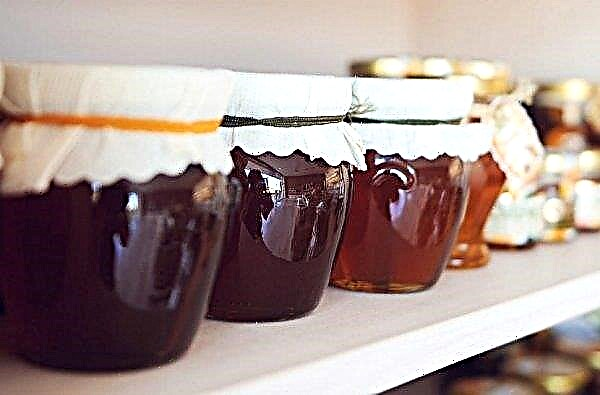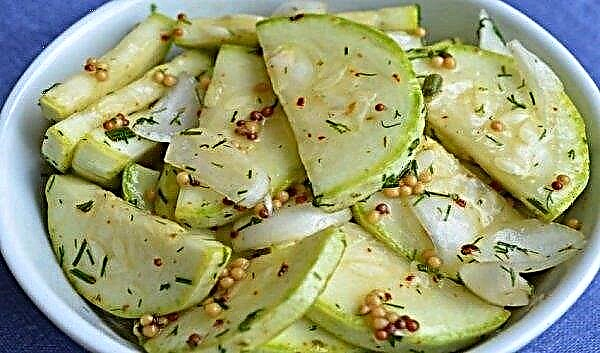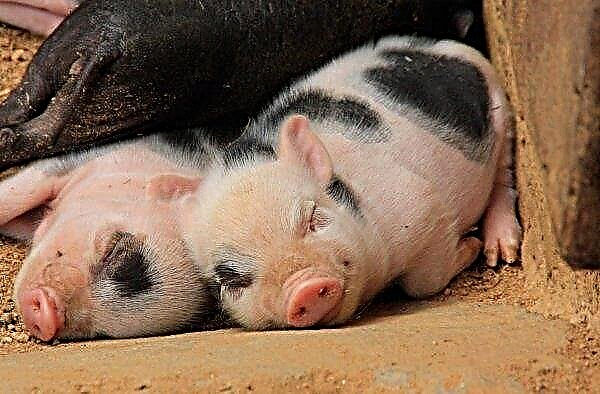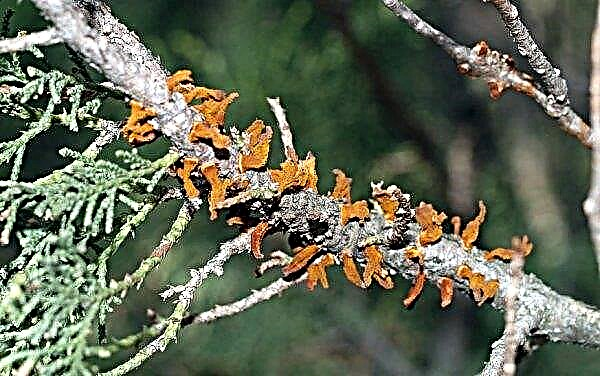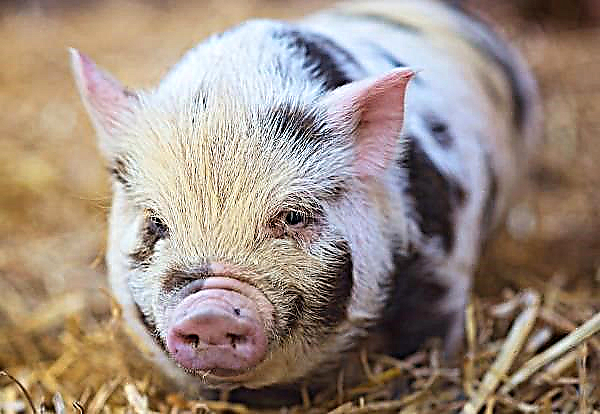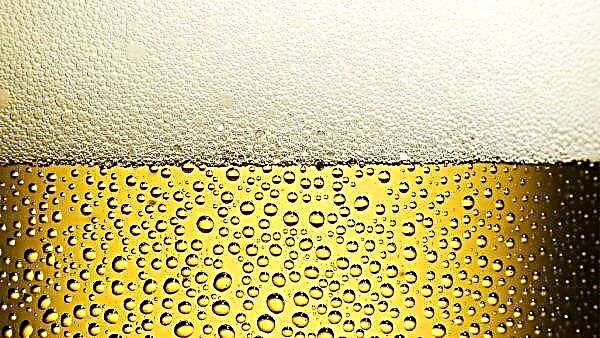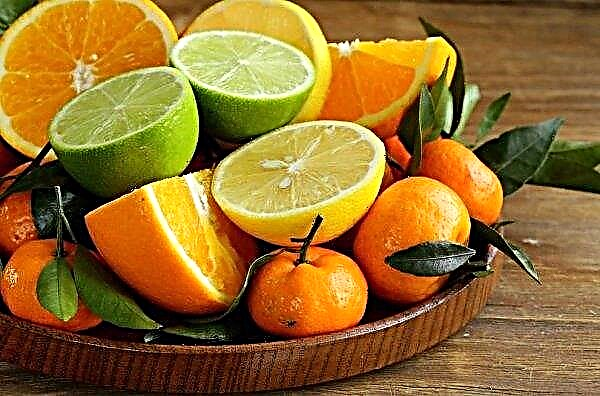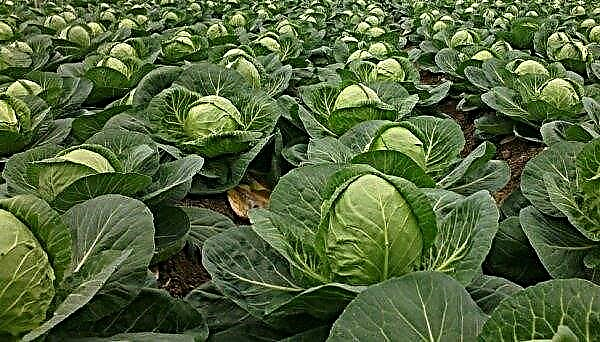A variety of medicinal plants help to cope with various ailments and diseases. The benefits and harms of curly parsley, its best varieties, rules and methods of cultivation, as well as caring for the garden, the rules for harvesting and storage of crops will be discussed in this article.
History of the plant
Parsley is one of the most famous and used culinary herbs, it also has healing properties. The scientific name of this plant is Petroselinum sativum; it is part of the Umbelliferae family, which also includes fennel and celery. Greens and parsley roots have been used for thousands of years as a medicinal plant and as a culinary ingredient.
Most likely, the plant originated in the Asian countries of the Mediterranean basin and spread thanks to its use by the Greeks as a medicine. In the ancient world, grass was widely used; the famous physicians Hippocrates and Galen mention such greenery in their works.
Did you know? In cosmetology, parsley is very popular as a means to remove freckles.
Currently, curly or, as it is also called, garden parsley, is actively cultivated all over the world and is used as a common ingredient in the preparation of numerous culinary dishes and drinks. Essential oil obtained from seeds is used as a flavor in the cosmetics industry, in perfumes and in soap. Petroselinum sativum has also been widely used in pharmaceuticals such as syrups, tablets, or creams.
The best varieties of curly parsley
Among agrarians there is an opinion that there are only two of the most successful and widely used varieties of parsley, the features of which are presented below.
Kucheryavets
Kucheriavets variety has a lush green rosette of saturated grass color. From one shoot, 30 to 90 lush leaves can grow. For such a high yield and beautiful appearance of symmetrical forms, this variety is considered one of the best.

It is worth noting that he can eat only greens, and the roots are unsuitable for use. Kucheriavets garden parsley reaches full maturity on the 70th day after the appearance of the first shoots. Productivity 2–2.5 kg per 1 m².
Mooskrause 2
Variety Mooskrause 2 is also early ripening and its ripening period begins on 65–70 days from the moment of germination. It has a lush deciduous rosette from 35 to 80 leaves per bush. The edges are openwork, leaves of a symmetrical shape, have a rich green color and fragrant aroma, due to the presence of essential oils in the structure of greenery. Here, only leaves are eaten, and the roots are not suitable. Productivity 2–2.5 kg per 1 m².
Video: Parsley curly Mooskaruse
What are the benefits and harms of curly parsley
This seemingly traditional ingredient of everyday dishes is distinguished by an extraordinary richness of various nutrients.
So, Petroselinum sativum is the source of:
- Vitamin C (133 mg per 100 g). The third part of a glass of parsley contains as much vitamin C as one orange;
- vitamin K (1640 mcg per 100 g), which is important for coagulation, blood regeneration and bone health;
- beta-carotene, an important antioxidant and immunoprotector;
- calcium (138 mg per 100 g). A cup of chopped parsley gives the same amount of this mineral as a glass of milk, but also simultaneously supplies vitamin C and magnesium, and in addition, improves the absorption of incoming calcium up to 50 times;
- potassium (554 mg per 100 g);
- iron, which in parsley contains more than in red meat (6.20 mg per 100 g).
- fiber;
- boron, a mineral that is especially important for fighting menopause and preventing osteoporosis. In addition, parsley is one of the best food sources of fluoride, another excellent bone fortifier.
- chlorophyll - a substance with antiseptic properties, which helps to fight various bacterial and viral diseases.

In addition to such a rich variety of trace elements, parsley has many beneficial effects on the body.
- Among them are the following:
- general strengthening of immunity;
- muscle tone and brain function;
- giving a sense of vitality;
- stress relief and beneficial effects on the nervous system;
- assistance in the regeneration of blood cells, their saturation with nutrients;
- bone skeleton strengthening;
- normalization of metabolism;
- adjustment of the gastrointestinal tract;
- cleansing blood vessels and preventing the formation of blood clots;
- washing effect on the kidneys;
- cleansing the body of toxins.
Did you know? Parsley has a powerful effect on the male genital organs and the duration of an erection. Even in ancient Rome there was a saying: "If a woman knew what parsley was doing with a man, she would go on her knees, bowing before this plant, to Rome itself."
- The disadvantages of this product and its possible negative effects include:
- an overdose of myristicin, which is part of parsley, can cause headaches, muscle cramps, cramps;
- it is a strong diuretic, because for people with problems of the genitourinary system and kidneys, such a product is not recommended;
- may have a negative effect on the liver, but only in case of excessive consumption (more than 1 kg of greens per day).
Contraindications to the use of parsley include:
- individual intolerance;
- kidney disease, which can be enhanced by substances contained in parsley;
- stones in the kidneys;
- hypertension, since parsley can increase blood pressure;
- cystitis, in which the diuretic properties of parsley will cause pain;
- diabetes because parsley lowers blood sugar.

Features of growing from seeds
Due to the fact that parsley seeds are small and germinate slowly, they can spend 4 weeks or more until germination. For planting, you need a prepared plot of soil, cleared of weeds, with good mixing of the soil, fertilized with compost. The depth of planting of this green should be three times the size of the seed, and therefore, it is worth 1–1.5 cm to deepen the seeds. Subsequently, planting is very important to water and always maintain high humidity there to get good results.
To prepare the seeds for planting in the ground, the following procedure should be carried out: grass seeds are laid out on a wet rag and left in this form for 2-3 days for swelling. So dry seeds wake up and when they get into the soil they begin to develop and germinate faster.
Proper care for curly parsley
Parsley requires good soil preparation, thoroughly loosened for the full development of the root. This plant needs a lot of nitrogen in order to grow quickly and have a healthy and high-quality appearance, taste and aroma. Other nutrients used are phosphorus (nourishes the roots) and potassium (helps against diseases, protein production and photosynthesis).
Important! Keeping the garden free of weeds helps reduce pests as their habitat is destroyed.
All of these nutrients are available in compost or in specialized fertilizers from gardening stores. When the second true leaves begin to emerge from the parsley, it is time for a transplant. Before starting the transplant, you should water the seedlings well. With the help of a shovel for transplanting, very carefully remove the seedlings without damaging the roots.
The distance between plants should be about 20 cm, depending on the variety. Finishing the transplant, water the seedlings without wetting the leaves. If you see diseased or diseased leaves, you must immediately eliminate them to prevent the spread of disease.
The main pests of parsley and methods to combat them:
- Aphid: an insect about 5 mm in size is green or black with yellow. Adults lay eggs in the crown of the plant, and when the larvae hatch, they feed on the roots. They are also common in carrots and celery. The result is root rot and death of the plant. In the fight, spraying with a solution of soapy water with the addition of ash will help.
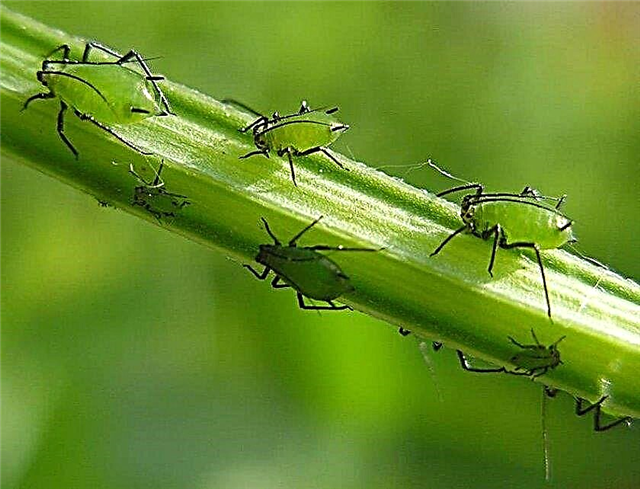
- Beetles: these insects feed on leaves and stems, biting them and weakening seedlings. You can reduce the incidence by maintaining good watering and timely feeding. One remedy is the use of diatomaceous earth.
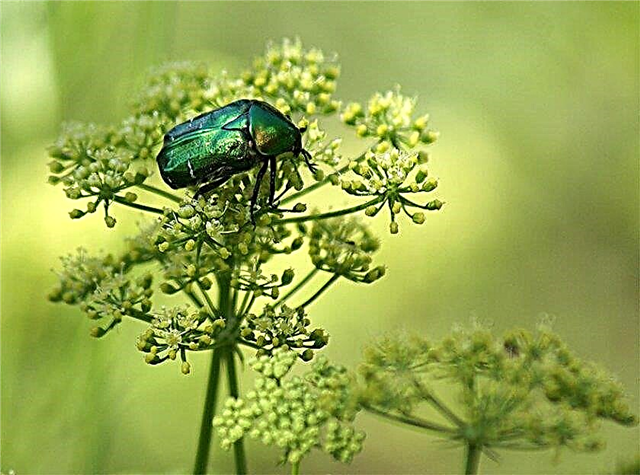
- Caterpillar: it is a pest that destroys the stems and leaves of the plant, and can be controlled by manually removing them or using Bt-based preparations (Bacillus Thuringiensis). This tool is harmless to humans and animals, but can affect harmful insects.
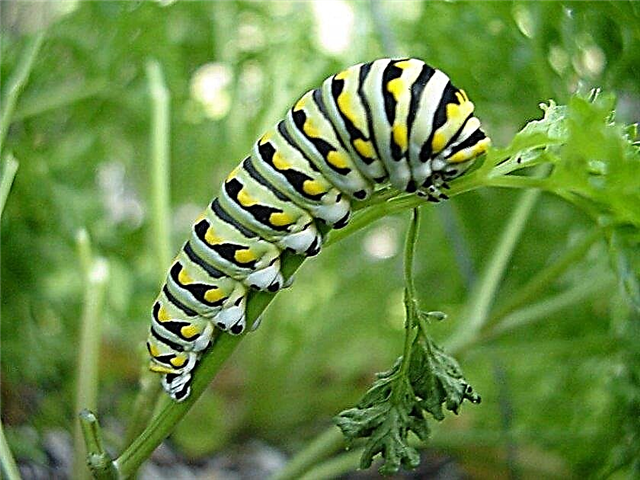
- Moth: its larvae feed on leaves, and then weave a web or solid network that bends the leaf inward. To control this pest, you can pinch off the leaves and kill the larvae, or use a spray of leaves with soapy water and table vinegar.
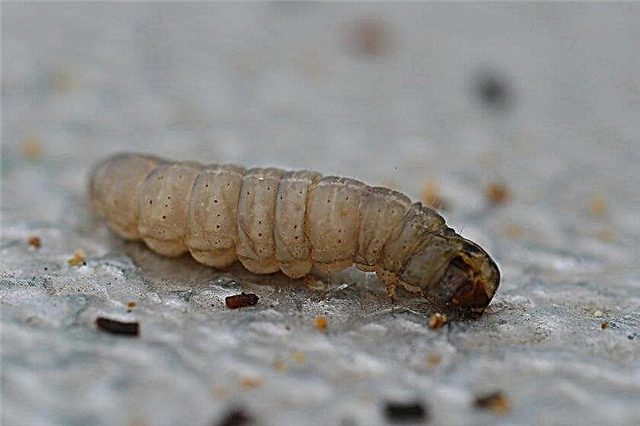
Harvesting and storage
You can begin to cut the deciduous crown when the plant is already growing intensively, approximately 60–70 days after sowing. Harvest the external stems of the plant should be so that the central shoots continued to grow, reaching about 10-15 cm in length.
By cutting the stems, plant growth is stimulated. If a flowering stalk of parsley appears, it can be cut, and you can also clean the entire plant and plant a new one, or let the plant produce seeds to replenish new supplies.
Important! Do not eat yellowed parsley leaves. They not only do not have useful properties, but also can cause food poisoning, accompanied by dizziness, nausea, pain and heaviness in the stomach.
There are some ways to store this herb fresh, as well as dried or frozen. To keep the greens fresh as long as possible, place the stems in a glass with clean water or in an airtight plastic bag.
If you decide to dry the greens, hang them in bundles in a shaded, dry place until completely dehydrated, then crush them by hand or in a special mortar and store in an airtight container. Also, greens can be frozen in the freezer - in this form, it will be stored for several weeks.

Tips from experienced gardeners
Further, a few recommendations and tips from experienced gardeners in the cultivation of a healthy and rich crop of parsley:
- After transplanting seedlings, you should add mulch from the grass to preserve soil moisture and additionally fight weeds.
- Weeds can affect parsley growth by slowing its growth. You should remove new weeds manually when they are small so as not to damage the delicate roots and stems of parsley with a chopper.
- The recommended watering rate for greens is approximately 5 liters of water per week per 1 bush. You should be careful not to wet the leaves - this will reduce the likelihood of the appearance and development of various diseases in the plant. It is advisable to add water in the morning, or when the sun reduces its strength in the evening.
- If your plants take on a light green hue, this indicates a lack of nitrogen. You can add compost, compost tea or some granular fertilizers diluted with water.
- Parsley can be grown in combination with asparagus, carrots, onions, green onions and tomatoes. It helps prevent diseases of tomatoes and roses and repels pests from them.
Guided by the tips and recommendations given in this article on planting and caring for beds of curly parsley, you can grow a rich harvest of greenery in your garden. It will also be possible to correctly and timely collect it and store it in accordance with the requirements, taking advantage of all the benefits that this familiar and at the same time extremely useful plant contains.






